What is the state flower of all 50 states?
Contents
- What is the state flower of all 50 states?
- Alabama State Flower
- Alaska State Flower
- Arizona State Flower
- Arkansas State Flower
- California State Flower
- Colorado State Flower
- Connecticut State Flower
- Delaware State Flower
- Florida State Flower
- Georgia State Flower
- Hawaii State Flower
- Idaho State Flower
- Illinois State Flower
- Indiana State Flower
- Iowa State Flower
- Kansas State Flower
- Kentucky State Flower
- Louisiana State Flower
- Maine State Flower
- Maryland State Flower
- Massachusetts State Flower
- Michigan State Flower
- Minnesota State Flower
- Mississippi State Flower
- Missouri State Flower
- Montana State Flower
- Nebraska State Flower
- Nevada State Flower
- New Hampshire State Flower
- New Jersey State Flower
- New Mexico State Flower
- New York State Flower
- North Carolina State Flower
- North Dakota State Flower
- Ohio State Flower
- Oklahoma State Flower
- Oregon State Flower
- Pennsylvania State Flower
- Rhode Island State Flower
- South Carolina State Flower
- South Dakota State Flower
- Tennessee State Flower
- Texas State Flower
- Utah State Flower
- Vermont State Flower
- Virginia State Flower
- Washington State Flower
- West Virginia State Flower
- Wisconsin State Flower
- Wyoming State Flower
State flowers are a beautiful way to show off the diverse and unique nature of each U.S. state. From the majestic rose of California to the wild and wonderful Pasque Flower of South Dakota, every state has its own unique flower to represent it. Here we’ll take a look at some of the most beloved state flowers in the United States, giving some insight into why they were chosen and what plants make up each floral emblem.
Each state’s local government has designated 50 official state flowers in the United States. For a variety of reasons, they are picked to represent the state. Some flowers were selected because they grow naturally throughout the state, while others were chosen for historical significance.
The following is a list of the 50 states and their flowers; for more details, please visit The U.S. National Arboretum. Civic leaders have used flowers and flower images as symbols of strong communities since ancient times. Flowers, in fact, could be considered an early form of marketing. While there is no shortage of advertising in modern America, we still rely on flowers for their unrivaled communication abilities, with each state proudly claiming an official state flower.
Alabama State Flower
Camellia
In June 1999 the Legislature designated the Camellia (Camellia japonica L) as the official state flower of Alabama. Camellia comes in colors pink, red and white with each color carrying different meanings. Pink Camellia means longing, red Camellia means “you are a flame in my heart”, while white Camellia means adoration, loveliness or perfection.
The Camellia flower comes in a variety of colors including white, pink, red, and yellow. They also have an impressive range of sizes from tiny to very large blooms. The most common type found in Alabama is semi-double japonicas which can reach up to 8 inches across when fully opened. Due to their adaptability, they flourish in gardens all around the state regardless of climate or soil conditions making them a favorite among gardeners and nature lovers alike.
Alaska State Flower
Forget Me Not
The state flower of Alaska is the Forget Me Not which was chosen in 1949. The Forget-Me-Not, is a symbol of remembrance, love and luck. It was adopted in 1949 as the official flower of Alaska. This beautiful wildflower grows along waterways and wet meadows throughout much of the northern hemisphere.
The scientific name for Forget-Me-Not is Myosotis alpestris. It has small, five-petaled flowers that range in color from light blue to deep purple with yellow centers. The blooms can appear singly or in clusters on wiry stems typically growing up to 10 inches tall. They have often seen carpeting moist tundra or woodland areas near streams and rivers during the late spring and early summer months.
Arizona State Flower
Saguaro Cactus Blossom
The Arizona State Flower is the Saguaro Cactus Blossom. This bright yellow flower has been the official state flower of Arizona since 1931 when it was adopted by the Arizona Legislature. Native to the Sonoran Desert, this iconic cactus symbolizes the resilient spirit of Arizonans.
The saguaro blossom is a trumpet-like flower that ranges in color from white to yellow and typically blooms between April and June each year. It is unique among desert plants because it requires a significant amount of water during its growing season in order to produce flowers. In fact, they are so scarce that some areas have a “Saguaro Blossom Festival” as an opportunity to celebrate their beauty!
Aside from being beautiful, these flowers provide essential benefits for other desert species, including birds and insects who depend on them for pollination and nourishment.
Arkansas State Flower
Apple Blossom
The Arkansas State Flower is the Apple Blossom. This delicate pink flower has been the official state flower since 1901, when it was selected by an act of the General Assembly of Arkansas. Every year in April and May, apple blossoms can be found in abundance throughout Arkansas, providing a stunning view for visitors to enjoy.
Apples are native to North America, with some varieties that were cultivated in colonial times still growing today. The apple blossom was chosen as a symbol of Arkansas’s agricultural heritage and hard-working rural lifestyle. It’s also a reminder of how important agriculture is to the state’s economy.
Apple blossoms have long been used as symbols of life and beauty, making them the perfect choice for Arkansas’ state flower!
California State Flower
California Poppy
The California state flower is a beautiful, five-petaled bloom known as the California Poppy. These flowers grow abundantly throughout the state of California and bring vivid color to many landscapes. The bright orange petals of this wildflower are a symbol of hope and promise for all citizens of the Golden State.
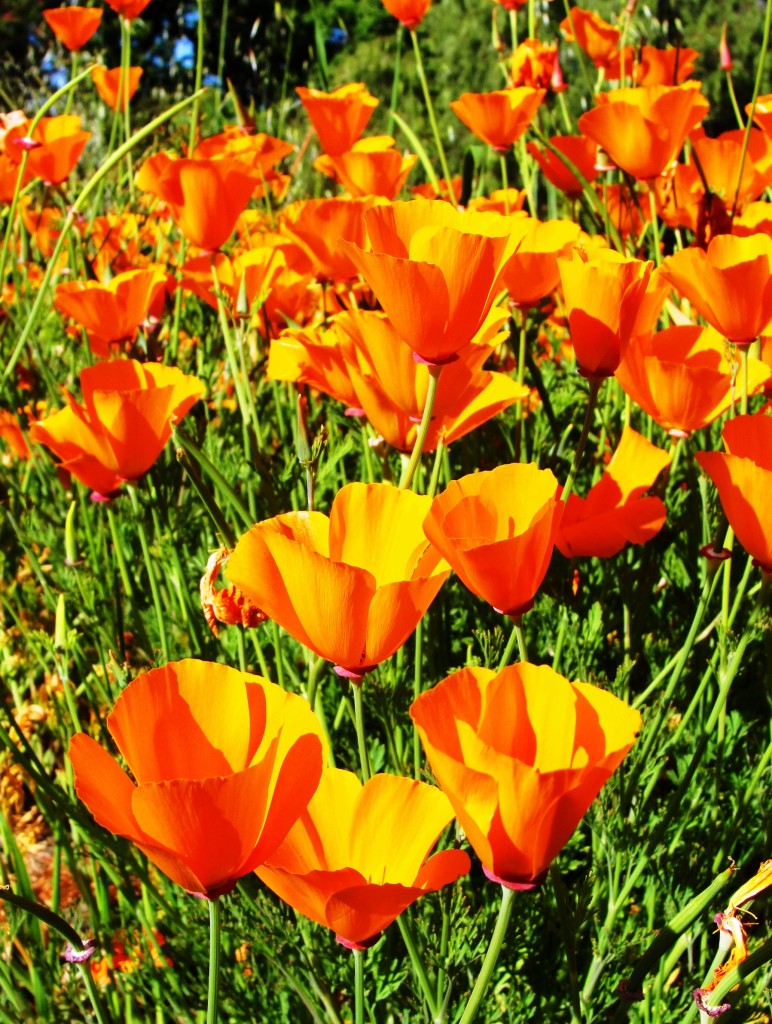
The official naming of the poppy as California’s state flower happened in 1903. Prior to that time, it was already an incredibly popular flower among both locals and international visitors alike who admired its brilliant hue and simple beauty from afar. Today, it can be found growing in backyards across the entire state, adding a splash of sunshine to any outdoor setting.
In addition to its aesthetic benefits, it also serves an important purpose for pollinators such as bees, hummingbirds, and butterflies who drink nectar from its cup-shaped center.
Colorado State Flower
Rocky Mountain Columbine
The Colorado State Flower, the Rocky Mountain Columbine, is a beautiful and vibrant symbol of Colorado’s natural beauty. Known for its bell-shaped flowers composed of five sepals and petals, the plant is native to the Rocky Mountains in North America. With its deep blue petals and white tips, it stands out amid other wildflowers found in mountainous regions.
Not only does this flower represent Colorado’s natural beauty but also its rich history. The columbine was officially adopted as the state flower in 1899 due to its prevalence in the area at that time. As a result, it has become an integral part of many Coloradan traditions such as family picnics or hiking trips to take in its beauty up close.
Connecticut State Flower
Mountain Laurel
The Connecticut State Flower is the mountain laurel (Kalmia latifolia). Native to North America, this evergreen shrub is known for its gorgeous clusters of white and pink flowers. It’s no surprise that the mountain laurel was adopted as the state flower in 1907 – it grows abundantly across the state in woodlands or on rocky slopes.
The blossoms of this beautiful plant are typically a deep pink shade with a hint of white at the center. They can also range from pale yellow to dark purple depending on their location and climate. The leaves of this shrub are glossy and dark green, adding an extra layer of beauty to its vibrant blooms. Its distinctive shape makes it easily recognizable by even amateur botanists.
Delaware State Flower
Peach Blossom
The Delaware state flower is the peach blossom, chosen as the official state flower in 1895. This delicate pink and white blossom is symbolic of the sunshine and beauty found throughout the State of Delaware. The peach blossom was chosen for its hardy character, long-lasting blooms and ability to thrive in all kinds of climates.
The peach tree itself is native to China but grows abundantly throughout North America. It has become a symbol of fertility and resilience, a representation of steadfastness that can be seen from spring through summer in the bloomed flowers on its branches. The petals are a soft pink hue with white edging around each one, making it an attractive addition to any landscape or garden.
Delawareans proudly display their love for this beautiful flower by having it adorn their homes, businesses and public spaces like parks or libraries.
Florida State Flower
Orange Blossom
The Florida State Flower is the vibrant orange-blossom, a flower that has become emblematic of the state itself. Native to the sandy soils and warm climates of Florida, this particular species of flower was adopted as the official state flower in 1909.
Orange blossoms are primarily known for their fragrant smell and beautiful white petals with bright yellow centers. When in full bloom these flowers provide a stunning visual contrast against the lush green foliage found throughout much of Florida’s landscape. The orange blossom’s strong connection to both agriculture and nature make it an especially fitting representative for this unique Sunshine State.
The orange blossom has been used in many different ways over centuries, and today it still holds a special place in Floridian culture, appearing on items such as license plates or being worn by brides during wedding ceremonies.
Georgia State Flower
Cherokee Rose
The Georgia State Flower is a symbol of the state’s natural beauty. The Cherokee Rose, also known as Rosa laevigata, is a species of rose native to northern China, Korea, and Japan that was introduced to the United States in the late 1700s. It has since been adopted by Georgia as its official flower.
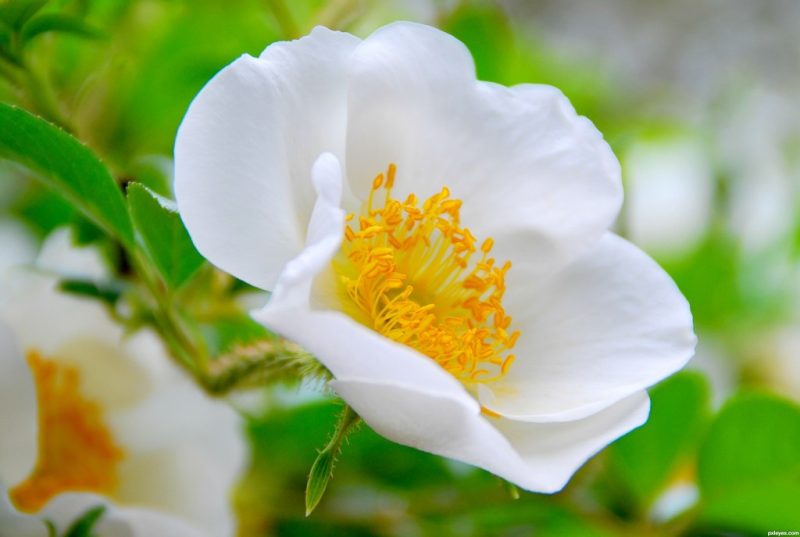
The Cherokee Rose is considered to be an evergreen shrub or small tree with white blossoms that have five petals and yellow stamens. These flowers typically bloom from April through May each year, producing fragrant blooms that are admired for their delicate beauty. They are often planted along roadsides throughout the state as well as in gardens and landscapes for their attractive appearance and low maintenance needs.
Hawaii State Flower
Pua Aloalo
The vibrant and captivating yellow hibiscus is the official flower of Hawaii. Not only is the hibiscus a popular sight in the Aloha State, but it also means much more to its people. The flowers have been celebrated for centuries as symbols of grace, beauty, and unity among Hawaiians.
The state has even designated seven different species that represent each of the major Hawaiian islands. There are thousands of varieties within these species, with colors ranging from white to vivid reds and oranges. Each bloom usually lasts around five days before being replaced by a new one.
The official state flower of Hawaii was declared in 1923 when the hibiscus was chosen as an emblem of tropical paradise and a representation of Hawaiian culture’s deep-rooted respect for nature and its beauty.
Idaho State Flower
Mock Orange
The state of Idaho is known for its natural beauty, and the state flower plays an important role in the scenery. The official flower of this beautiful mountain state is the Syringa – better known as mock orange. This flowering shrub is not only a symbol of Idaho’s beauty, but also serves a purpose in many home gardens.
The mock orange shrub typically grows to a height between three and ten feet tall and produces fragrant white flowers with four petals each. These blooms appear in late May or early June, painting landscapes across the Gem State with their bright color. Mock oranges are popular among homeowners because they require very little maintenance and can thrive in different soil types. As long as these hardy plants receive plenty of sun exposure, they will put on quite a show every spring!
Illinois State Flower
Purple Violet
On January 21, 1908, the Purple Violet was designated as the state flower of Illinois.
The state of Illinois has a wide variety of native flora, with over 1,500 species of plants. One of the favorite flowers and symbols of Illinois is the state flower, the Native Violet (Viola sororia). This delightful small flower blooms from April to June in colors ranging from deep purple to white. Native Violets have several symbolic meanings including faithfulness, loyalty and humility.
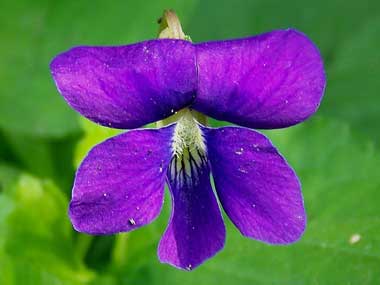
Native Violets are also known as “Common Blue Violets” or “Mourning Widows.” The petals on these flowers tend to be heart-shaped with a yellow center and can vary in size. These unique flowers grow naturally in woodland areas near moist soil or meadows. They are found throughout the United States but they thrive best in areas with cold winters and mild summers like that found in Illinois.
Indiana State Flower
Peony
The Indiana State Flower is the Peony. This beautiful flower is native to the state of Indiana and has been a symbol of commemoration for more than 100 years. The Peony was adopted as the state flower of Indiana in 1957.
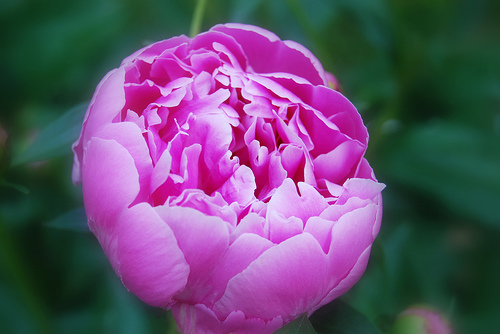
Peonies have a unique and captivating beauty, boasting large, colorful petals that can be seen in shades of pink, purple and white. The plant grows up to three feet tall in full bloom and will often attract butterflies and other pollinators due to its sweet nectar-bearing flowers.
The state flower has been symbolic since 1913 when it was adopted as an official emblem by the legislature. To this day, it serves as a reminder of home for many Hoosiers who associate peonies with fond memories of family gatherings or special occasions involving loved ones. It’s also used as a source of pride among residents who take great joy in displaying the beloved bloom throughout their garden or property.
Iowa State Flower
Wild Prairie Rose
The state of Iowa is known for its agricultural and natural beauty, and the state flower is no exception. The wild prairie rose, also known as rosa arkansana, is a beautiful pink blossom that symbolizes the strength and hardiness of the people in Iowa.
This flower grows naturally in the prairies of Iowa and can be seen throughout most of the state during summer months. It features five petals with a soft pink hue that blossoms from June to September. This beautiful flower has been considered as an official floral emblem since 1897 when it was selected by school children statewide via ballot box selection.
Iowa’s wild prairie rose has become symbolic of many things including love, romance, admiration, gracefulness and even beauty despite hardship or adversity.
Kansas State Flower
Sunflower
The Sunflower (Helianthus annuus) is the official state flower of Kansas. Native to the area, sunflowers have long been a symbol of joy and happiness in the state. The vibrant yellow petals and dark center are a cheerful sight for many Kansas natives, and it’s no surprise that it was selected as their beloved state flower in 1903.
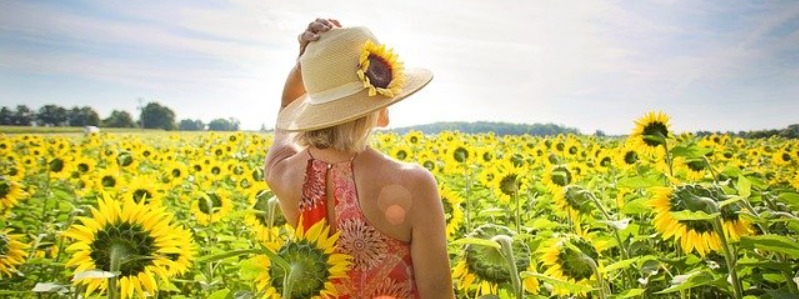
Sunflowers can be found growing wild across fields and roadsides throughout much of the state. This hardy plant is tolerant to drought conditions, making it an ideal choice for Kansas’ often dry climate. It’s also a popular choice among gardeners due to its ease of cultivation and ability to attract pollinators like bees and butterflies into gardens.
No matter where you live, you can find these cheerful blooms in full bloom each summer across the plains of Kansas.
Kentucky State Flower
Goldenrod
The beautiful goldenrod (Solidago sp.) is the official state flower of Kentucky. This leafy and fragrant wildflower is native to much of North America and has been adopted by the Bluegrass State as a symbol of its natural beauty.
Boasting bright yellow blooms, these hardy perennials are often seen growing in fields, meadows, and roadsides during late summer and fall. The goldenrod can reach heights of three feet or more and is prized for its lush foliage that provides an attractive backdrop for other plants in the garden. Its delicate flowers attract a variety of pollinators including bees, butterflies, hummingbirds, and moths.
The Kentucky General Assembly officially designated the goldenrod as the state flower in 1926 due to its widespread presence across Kentucky’s varied landscapes.
Louisiana State Flower
Magnolia
The Louisiana state flower is the magnolia. Magnolias are a well-known symbol of southern hospitality and grace, and Louisiana chose this beautiful blossom to represent its state in 1900. The magnolia tree has many varieties, but the most common type found in Louisiana gardens is the southern magnolia tree (Magnolia grandiflora). This evergreen tree grows up to 80 feet tall with large, leathery leaves and fragrant white flowers that bloom from June through August.
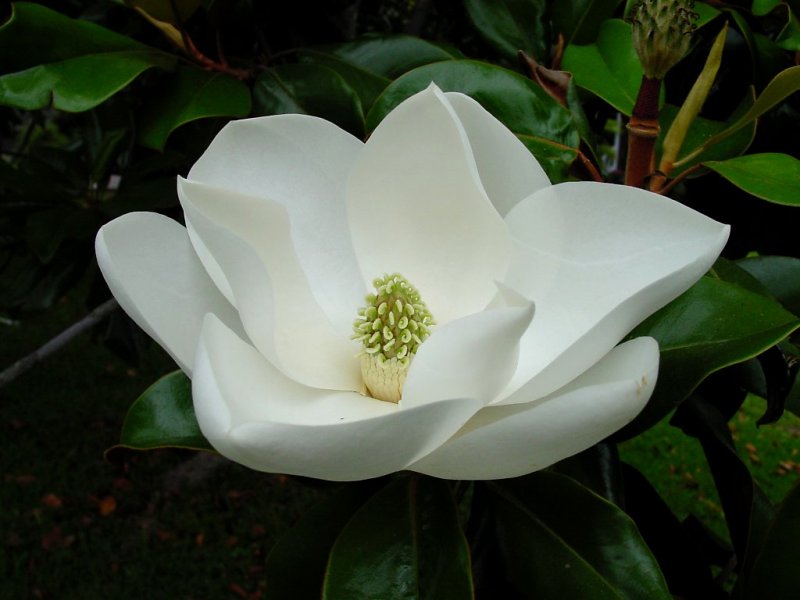
The petals of the magnolia flower have a soft texture like velvet which make them especially desirable for floral arrangements. Magnolias are also used as flavorings for drinks, syrups, jellies, desserts and even candied flowers for special occasions.
Maine State Flower
White pine cone and Tassel
The Maine state flower, the white pine cone and tassel, is a fitting symbol for this beautiful New England state. This flower is native to the Northeastern part of America, where it has been admired since colonial times. It represents the beauty of Maine’s natural environment and its deep roots in history.
This flower features five-pointed cones that are one to two inches long along with an invariably noticeable “tassel” that consists of several small stems bearing yellowish brown flowers. The cones begin as green but mature into a light brown color over time. In April and May, the tiny yellowish-brown flowers appear on the plant which add a nice contrast to its evergreen foliage. The white pine cone and tassel can be found in many different habitats throughout Maine such as forests, wetlands, alpine areas and meadows.
Maryland State Flower
Black-eyed Susan
The Black-eyed Susan was designated as the state flower of Maryland on April 18, 1918.
The Black-eyed Susan has a long and storied history in the Old Line State. The bright yellow bloom is a symbol of perseverance and hopes in times of adversity. This beautiful flower can be found growing wild throughout Maryland’s countryside as well as in gardens across the state.
The Black-eyed Susan (Rudbeckia hirta) is an annual with a single stem that grows to heights of up to three feet tall. Its vibrant yellow petals have dark brown centers, giving it its distinctive name. It blooms from early summer until frost and provides life to meadows, fields, roadsides, and other open areas. The flowers are also commonly used in floral arrangements or pressed into book pages for decoration.
Massachusetts State Flower
Trailing-Arbutus
The Massachusetts State Flower is the Mayflower, or Trailing Arbutus. This flower was chosen to represent the state because of its symbolic ties to the first settlers of Massachusetts. It’s a low-growing evergreen shrub that has pink or white flowers in early spring and grows in shady, moist woods throughout much of New England.
The Mayflower has a special meaning for residents of Massachusetts. It was the flower carried by the Pilgrims on their journey across the Atlantic Ocean and symbolizes courage, hope, and perseverance; qualities which have been essential in building up this great state. The plant’s scientific name is Epigaea repens and it belongs to the heath family Ericaceae. The flower’s leaves are dark green and glossy with masses of pale pink flowers blooming from April through June depending on location.
Michigan State Flower
Apple Blossom
The Michigan state flower, the apple blossom, is a fitting symbol of the great state of Michigan. Native to Michigan and many other states in the US, apple blossoms bloom in both spring and summer. The beautiful white petals with a pink tinge are quite eye-catching and add a pop of color to any garden or landscape.
Michigan’s apple blossom was officially declared as the state flower in 1897 by then State Representative Dewitt C. Weakley for its fragrance, beauty and grandeur – qualities that embody everything wonderful about Michigan itself! The choice was highly praised at the time and continues to represent all that is great about our beloved state today.
Apple trees can be found throughout Michigan, providing us with delicious apples each year while also serving as a reminder of why they were declared our official floral emblem more than 100 years ago.
Minnesota State Flower
Pink and White Lady’s Slipper
The Minnesota state flower is the Pink and White Lady’s Slipper. This beautiful flower was chosen by the Minnesota State Legislature in 1902 as the official state flower. The Lady’s Slipper is a native wildflower of North America, and found in woodlands and bogs throughout much of the United States, including Minnesota. It has two petals that range from pink to white in color and a pouch-like lip which gives it its common name.
The Lady’s Slipper has long been held as a symbol of luck for Minnesotans, with many believing that it will bring them good fortune if they find one growing wild or possess one as part of their home gardens. Some even use dried blossoms as part of their décor during special occasions such as weddings or other celebrations, signifying joy and beauty for all who are present.
Mississippi State Flower
Magnolia
The Magnolia blossom, the official state flower of Mississippi, is an iconic symbol of the Magnolia State. Composed of a large fragrant white bloom with a yellowish-orange center stamen, the magnolia stands out among other flowers for its simplicity and brilliance. Its sturdy green leaves can easily be seen adorning many yards throughout the state.

The magnolia’s history dates back to before any European settlers entered what is now known as Mississippi. The Choctaw Native Americans referred to it as “menehune,” meaning perfume or fragrance. The magnolia has been associated with strength and beauty ever since it was first named by French botanist Pierre Magnol in 1696. It became officially recognized by Mississippi in 1952 when then Governor Fielding L. Wright declared it the state flower without hesitation.
Missouri State Flower
Hawthorn
The Show-Me State boasts the beautiful hawthorn as its state flower. This flower is a member of the rose family and has white or pink blossoms that appear in May. The Missouri General Assembly declared the hawthorn as the official state flower in 1923.
Hawthorns are native to Missouri and can be found growing wild throughout the state. They have sharp thorns that protect them from predators, making them an ideal species for wildlife habitats. When they come into bloom, they create stunning displays of hundreds of delicate flowers, each one with five petals ranging in shades of white or pink. These petals are often striped with a deeper hue around their rims and provide subtle hints of yellow at their centers. Their sweet aroma drifts through woodlands and open fields alike, filling the air with beauty and grace beloved by all who experience it.
Montana State Flower
Bitterroot
The state flower of Montana is the Bitterroot, also known as Lewisia rediviva. It is one of the few plants that can survive in the harsh and rugged terrain of Montana. This flower holds a special place in the hearts of many Montanans and has even been designated as an official symbol of the state.
The Bitterroot has long been used by Native American tribes to treat ailments such as sore throats and headaches. It was even believed to have spiritual powers that could protect a person from danger or harm. The unique beauty and hardy nature of this flower make it a beloved symbol throughout Montana.
Today, the Bitterroot can be found growing wild along roadsides, trails, and other areas with dry soil across western America.
Nebraska State Flower
Goldenrod
The Nebraska State Flower is the goldenrod. The bright and vibrant plant has been a symbol of the state since 1895 when it was declared as such by then-governor Silas A. Holcomb. Native to North America, goldenrod grows in fields, along roadsides and in gardens with its yellow blooms reaching heights of up to six feet tall.
Goldenrod represents strength and encouragement for those who call Nebraska home; its strong stems are symbolic of the resiliency of the people living in this great state. It also serves as a reminder to always strive for progress and look forward to brighter days ahead. Goldenrod’s beautiful yellow color stands out against the prairie sky, a reminder that even on tough days there will be something beautiful if you just take a moment to appreciate it.
Nevada State Flower
Sagebrush
The Sagebrush is the state flower of Nevada. This hardy and drought-tolerant plant can be found throughout the Silver State, growing in desert valleys, rocky slopes, and sagebrush steppes. Its sweet scent has been described as reminiscent of the smell of honey mixed with the pungent odor of creosote bush.
This wildflower symbolizes Nevada’s rugged beauty and its ability to thrive in difficult conditions. The Sagebrush is also an important part of Nevada’s ecology; it helps to prevent soil erosion and provides food for many species of birds and animals. As a result, this resilient flower has become a beloved symbol for both residents and visitors alike.
New Hampshire State Flower
Purple Lilac
The New Hampshire state flower is the Purple Lilac. This beautiful flowering shrub is native to the Northeastern United States and is widely appreciated for its fragrant flowers. The state of New Hampshire has taken a special interest in this species and has designated it as the official state flower since 1919, making it one of the oldest American state flowers.
Purple Lilacs are relatively easy to grow and can be found in many home gardens. They typically bloom from mid-April to early May and can reach heights of up to 12 feet, producing richly scented clusters of purple, lavender or white flowers that attract bees and other pollinators. In addition to its ornamental qualities, purple lilac also has medicinal uses — its bark contains salicylic acid which can be used as an analgesic or antiseptic agent.
New Jersey State Flower
Violet
The Garden State is home to a variety of beautiful flora, but one flower stands out among the rest as New Jersey’s official state flower: the purple violet. The violet (Viola sororia) was chosen by the state legislature in 1971 due to its beauty and abundance in wildflower meadows throughout New Jersey.
This small bloom is typically bright purple with white or yellow centers, although some species can be lavender, blue, or even nearly black in color. It has a delicate appearance and emits a sweet floral scent that lasts for days after being picked. As one of the first blooms of springtime each year, violets are an important indicator of seasonal change and signal the end of winter for many native animals and insects.
New Mexico State Flower
Yucca flower
The New Mexico State Flower is the beautifully fragrant Yucca. The Yucca, also known as “soaptree” or “Spanish bayonet”, has been the official state flower of New Mexico since 1927. This evergreen shrub is a symbol of strength and perseverance to many native residents and can be spotted throughout the state’s desert landscapes.
The Yucca consists of thick green leaves that are covered in white fibers along with creamy white flowers that bloom in summertime. Its white blooms provide an eye-catching contrast against its dark green foliage, creating a stunning display for all to enjoy. For those seeking tranquility, its sweet smell provides a calming scent as it wafts through the air during warmer months.
New York State Flower
Rose
The rose is the official flower of New York State. This beautiful flower symbolizes beauty and elegance in the Empire State. The rose was chosen for this honor in 1955, making it one of the earliest states to select an official flower.
The rose has been a popular symbol for centuries. Its beauty, grace and variety make it a favorite amongst many cultures all over the world. In New York, roses can be found in gardens, parks and other public areas throughout the state. Some of the most popular varieties include hybrid tea roses, climbing roses and floribunda roses.
In addition to its symbolic value, the rose also has medicinal properties which have been used since ancient times to treat a range of ailments including headaches, skin conditions and digestive issues.
North Carolina State Flower
American Dogwood
North Carolina is proud of its state flower, the beautiful purple-blue violet. This small, delicate bloom has been the official flower of North Carolina since 1903 when it was adopted by the General Assembly. The common blue violet can be found in many areas throughout the state and is a favorite of gardeners due to its easy cultivation and low maintenance needs.
These charming little flowers have a special place in North Carolina history. Legend has it that during a Revolutionary War battle in Guilford Courthouse, Governor Caswell’s troops noticed how quickly the violets grew around their feet as they were marched off to fight. It left such a lasting impression on them that they chose this lovely flower as their symbol of unity and hope for freedom from tyranny.
North Dakota State Flower
Wild Prairie Rose
The North Dakota State Flower is the wild prairie rose. This beautiful flower symbolizes the strength and spirit of North Dakota’s people and its culture. The wild prairie rose blooms in the summer months, bringing brightness to the Land of Rough Riders that can be seen from miles away.
The wild prairie rose has five petals with pink tips that are white at their base. Its center contains several yellow stamens that create a lovely contrast with its surrounding hues. Many locals take delight in walking through blooming fields of wild prairie roses each season, particularly during June and July when these flowers are in full bloom.
Ohio State Flower
Scarlet Carnation
The Ohio Buckeye (Aesculus glabra) is the official state flower of Ohio. This deciduous tree grows to a height of 40-60 feet and its trunk can reach up to 2 feet in diameter. The leaves are arranged in palmately compound clusters, and have five leaflets with serrated margins. Buckeyes produce small fruit that are dull green, sometimes turning yellow or brown when ripe.
The buckeye was officially adopted as the state flower on March 28th, 1953. It was originally given this title due to its strong ties to Ohio’s history; during the War of 1812, General William Henry Harrison used buckeyes as good luck charms before winning at the Battle of Tippecanoe.
Oklahoma State Flower
Mistletoe
The Oklahoma State Flower is the beautiful Mistletoe. This evergreen shrub has been a beloved symbol of the state since 1893 when it was officially designated as the official flower in honor of its unique and vibrant history. The Mistletoe brings to mind feelings of nostalgia for many Oklahomans, as it grows abundantly throughout the state in rural areas, forests and woodlands.
Mistletoe is an evergreen plant that consists of small flowers and small leaves that grow on a variety of different trees throughout Oklahoma. It can be found anywhere from 3-20 feet off the ground, making it very easy to find while out exploring nature in Oklahoma’s great outdoors! Due to its popularity with locals, mistletoe is also frequently used as decorative accents during winter holidays such as Christmas, giving it even more meaning to Oklahomans.
Oregon State Flower
Oregon Grape
The Oregon State Flower, the Oregon Grape (Mahonia Aquifolium), is a small evergreen shrub that grows in the Pacific Northwest of the United States. Native to western North America, it is hardy and adaptable to a variety of soils and climates. This flower has bright yellow clusters of petals which bloom from mid-February through early April. It can be found in abundance in deciduous woodland areas, especially along roadsides or clearings.
Oregon Grape’s foliage consists of spiny, holly-like leaves with five to seven leaflets on each leaf stem; its fruit is a dark blue-black berry similar in size and shape to blueberries. Its wood contains tannins which make it valuable for medicinal use; its roots have been used for centuries for their healing properties.
Pennsylvania State Flower
Mountain Laurel
The state flower of Pennsylvania is the Mountain Laurel (Kalmia latifolia). This evergreen shrub is native to the Appalachian Mountains, where it can be found in forests and meadows. It’s also known as calico bush or spoonwood due to its fragrant pink, white, or rose flowers. The Mountain Laurel was designated as the official state flower of Pennsylvania in 1933 by the State General Assembly.
This beautiful flowering plant has many features that make it popular with gardeners. Not only does it bring color and texture to a garden, but because it’s evergreen, it will keep your yard looking attractive all year round. In addition, its unique fragrant blooms attract butterflies and other pollinators to your landscape from late spring through early summer.
Rhode Island State Flower
Common Blue Violet
Rhode Island proudly boasts the violet as its official state flower. This hardy, resilient bloom is not only easy to find in nature, but also has a special place in Rhode Island’s history.
The violet was adopted by the General Assembly of Rhode Island in March of 1968 as the state flower. It was chosen for its beauty and resilience during cold weather, which reflects the character of Rhode Islanders themselves. The flowers are easily found throughout woodlands and meadows all over the state, adding a lovely splash of color to their landscapes.
The violet is an ideal symbol for Rhode Islanders and a reminder that even when things look bleakest, there is always hope for something beautiful. For this reason it continues to be a beloved symbol of the Ocean State today!
South Carolina State Flower
Yellow Jessamine
The South Carolina State Flower is the Yellow Jessamine. This fragrant flower is native to the state, growing in abundance in its wetlands, woodlands and even on roadsides. It is a beloved symbol of beauty for those who live in or visit South Carolina.
The Yellow Jessamine first became the official state flower of South Carolina in 1924 by an act of legislation passed by both houses of the General Assembly. The flower was chosen because it was believed to represent grace and beauty due to its delicate petals and sweet fragrance, as well as its vibrant yellow color that stands out amongst other flowering plants. Being one of few flowers that can survive the humid climate of South Carolina it has become a popular choice for landscaping gardens across the state with some locals even claiming it to be an omen of good luck!
South Dakota State Flower
Pasque Flower
The South Dakota State Flower is the Pasque flower, or Anemone patens. This unique and beautiful flower is native to the Midwest region of North America and grows in a variety of soils. It blooms from April to June and produces large, showy white or lavender blossoms with yellow centers on single stems that can reach between 8-24 inches in height.
The flowers have been adopted by the state as an official symbol since 1903 when it was recommended by Mrs. C.C. Andrews, Superintendent of Public Instruction at that time. The Pasque flower is known for its strong beauty, its ability to survive harsh climates, and its resilience – all traits reflective of the South Dakotan spirit!
Tennessee State Flower
Iris
Tennessee is home to a variety of natural wonders and attractions, but one of the most beloved is its state flower, the Iris. The Iris has been recognized as Tennessee’s official state flower since 1933, when it was declared by a joint resolution of the General Assembly. This beautiful purple bloom is representative of the Volunteer State’s rich history and culture.
The Iris is an especially fitting choice for Tennessee because it blooms in early springtime each year- just like new beginnings within nature! It also serves as an inspiration for Tennesseans to embrace their heritage no matter what the season. The Iridaceae family includes numerous varieties including yellow or orange petals with purple veins, deep blue petals with white veins, and yellow petals with crimson veins – all unique representations of this special flower’s beauty.
Texas State Flower
Bluebonnet
The Texas State Flower is the Bluebonnet, a wildflower native to the state. The bluebonnet’s scientific name, Lupinus texensis, reflects its Texan origin. It was adopted as the official state flower in 1901.
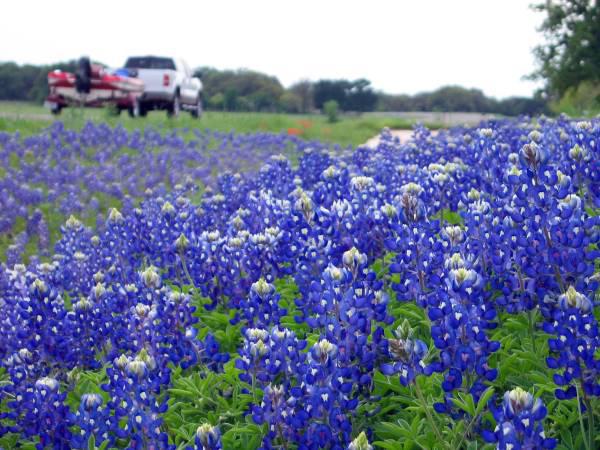
The bluebonnet is famous for its bright blue-purple petals that blanket fields and roadsides throughout Texas each spring. Every year, tourists flock to areas known for their abundance of these beautiful flowers in order to take photographs and enjoy nature’s beauty.
Texas is so proud of its beloved state flower that it has been featured on roadside signs and even appears on license plates in some parts of the state. Whether you are a lifelong Texan or just visiting from out of town, be sure to take some time this season to appreciate this iconic symbol of Lone Star pride!
Utah State Flower
Sego Lily
The Sego Lily, a symbol of unity and strength, became the state flower of Utah in 1911. The flower is native to Utah’s semi-arid climate, and it can be found in meadows and on hillsides throughout the state. It was chosen as the official state flower in 1911 due to its ability to survive and thrive even in harsh conditions.
The sego lily has six petals that range from white to pale purple, with a distinct yellow center. It stands up straight from its base, reaching heights of 8-18 inches tall. Its leaves are long and linear with a grassy texture, making them easy to spot even from far away. The plant has many medicinal properties, including antiseptic qualities that help heal cuts or rashes when applied topically.
Vermont State Flower
Red Clover
The state flower of Vermont, the Red Clover, is a symbol of beauty, hard work and determination. It is a wildflower that blooms from June through August in meadows and fields across the state.
Native to Europe, this clover grows in most parts of North America and has been used for centuries in herbal remedies. The bright red flowers have three leaves which are said to bring good luck when found with four leaves. The Red Clover has been Vermont’s official flower since 1895 when it was made the official design on their State Seal.
Today, this beautiful bloom can be seen growing along roadsides throughout Vermont during summer months. With its sweet fragrance and colorful blossoms, it is easy to see why this flower won the hearts of many Vermonters as their official emblem!
Virginia State Flower
American Dogwood
The Virginia state flower, the American Dogwood (Cornus florida), is native to the Eastern portion of North America. It is a small deciduous tree or shrub that typically grows between 15-30 feet tall and can be found in wooded areas throughout the state. This species of dogwood has an interesting history; it was adopted as the official flower in 1918 due to its significance during colonial times.
Its four petals are white and form a cross shape, which was said to symbolize the crucifixion of Jesus Christ. The red berries were considered symbolic of the blood he shed for mankind’s sins. Additionally, legend states that blooming dogwoods were present when Jesus died on Good Friday. In addition to being beautiful and meaningful, this flower has many practical uses as well; parts of it have been used medicinally for centuries.
Washington State Flower
Coast Rhododendron
The Washington State Flower is the beautiful Coast Rhododendron. This fascinating flower can be found in abundance throughout the great state of Washington and has become a symbol of the lush, natural beauty that the region is known for.
Native to western North America and parts of Europe, this gorgeous flower was declared as Washington’s official state flower in 1892 by then-governor Watson Squire. The bright magenta blossoms are often found growing on thick shrubs near streams or along forested hillsides, offering a stunning visual contrast against the greens and browns of its natural environment.
During peak blooming season from mid-May to early June, it’s not uncommon to see large clusters of Coast Rhododendrons dotting the landscape with their vibrant pink petals.
West Virginia State Flower
Rhododendron Maximum
The state flower of West Virginia is the Rhododendron. This sweet-smelling blossom grows wild throughout the mountain state and is available in a variety of colors, including pink, white, yellow, and purple. The Rhododendron was officially adopted as West Virginia’s state flower in 1903 and has become an iconic symbol of the state’s natural beauty ever since.
Rhododendrons are known for their large, showy blossoms that make them especially popular with gardeners who want to spruce up their outdoor spaces. The shrubs can grow anywhere from four to twenty feet high and produce beautiful blooms each spring that will last until early summer. Many locals appreciate seeing rhododendrons growing along roadways or in gardens as a reminder of home during the warmer months.
Wisconsin State Flower
Wood Violet
The Wisconsin State Flower is the Wood Violet (Viola papilionaceae). It grows in many areas of the state, including in lowland woods and along roadsides. The Wood Violet has been adopted as the official state flower of Wisconsin since 1909.
The beauty of this flower is known for its delicate petals, which are usually a deep blue to purple hue with white accents near its center. This small but fragrant flower also produces edible fruits that can be used for jams and jellies. It blooms from April to June and prefers moist soil, making it a common sight across Wisconsin’s diverse forests and meadows.
The Wood Violet has played an important role in the mythology of various Native American tribes, who believed its petals could ward off evil spirits or signify peace between warring factions.
Wyoming State Flower
Indian Paintbrush
The Indian Paintbrush or Painted Cup or Prairie Fire was selected as the state flower of Wyoming in 1917.
The state flower of Wyoming is the Indian Paintbrush, otherwise known as Castilleja linariifolia. This vibrant red flower blooms in late spring and is native to Wyoming, though it can also be found in other western states like Utah, Colorado, and New Mexico. It gets its name from its bright red color resembling a paintbrush dipped in paint.
The Indian Paintbrush is a perennial that grows up to three feet tall and has narrow leaves with small flowers on them. Each flower head sits atop a thin stem and comes in different shades of red or yellow. As the name suggests, this delicate bloom is made for painting landscapes with its vivid colors! It’s easy to recognize due to its unique shape and hues which make it stand out from the other plants around it.

